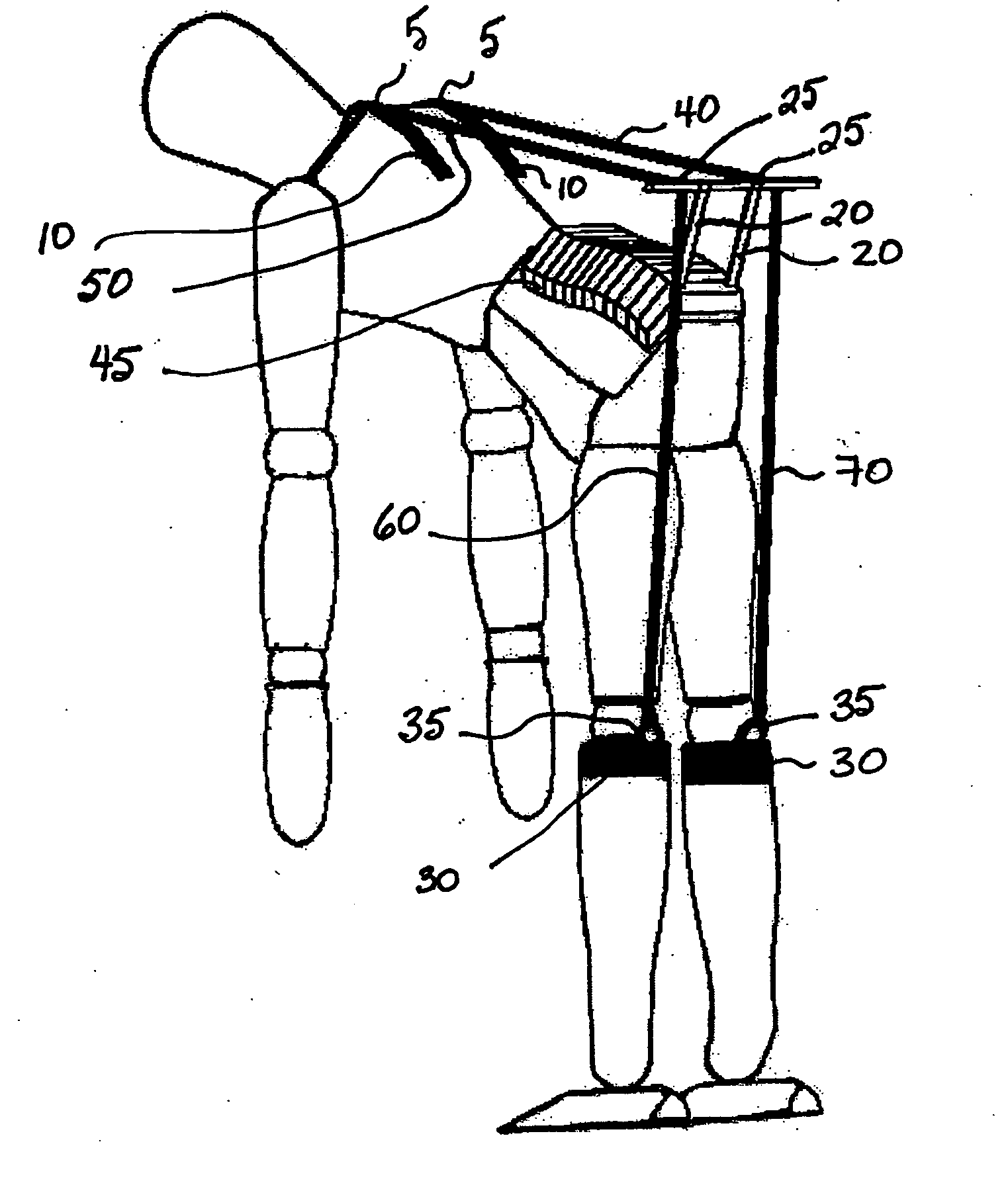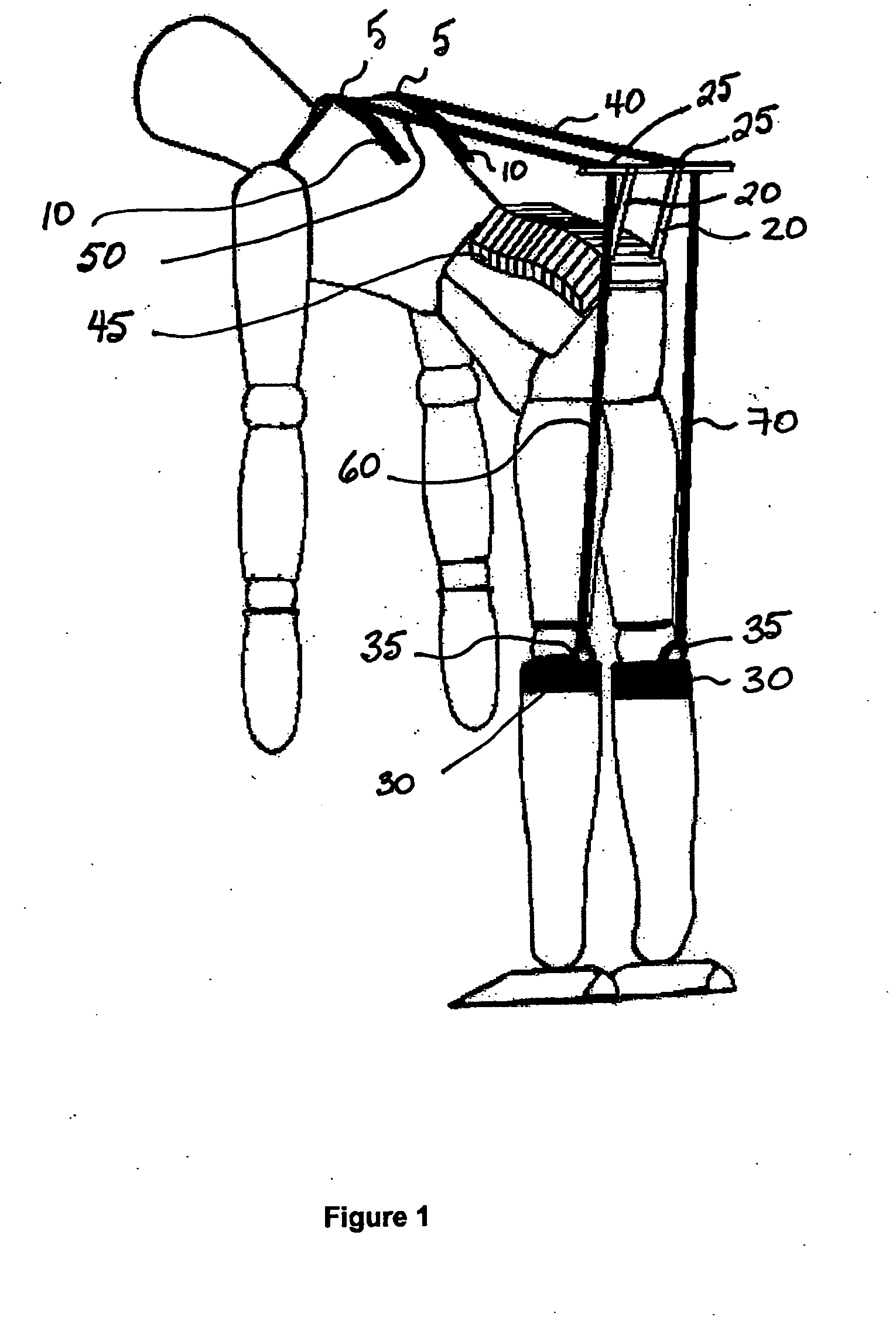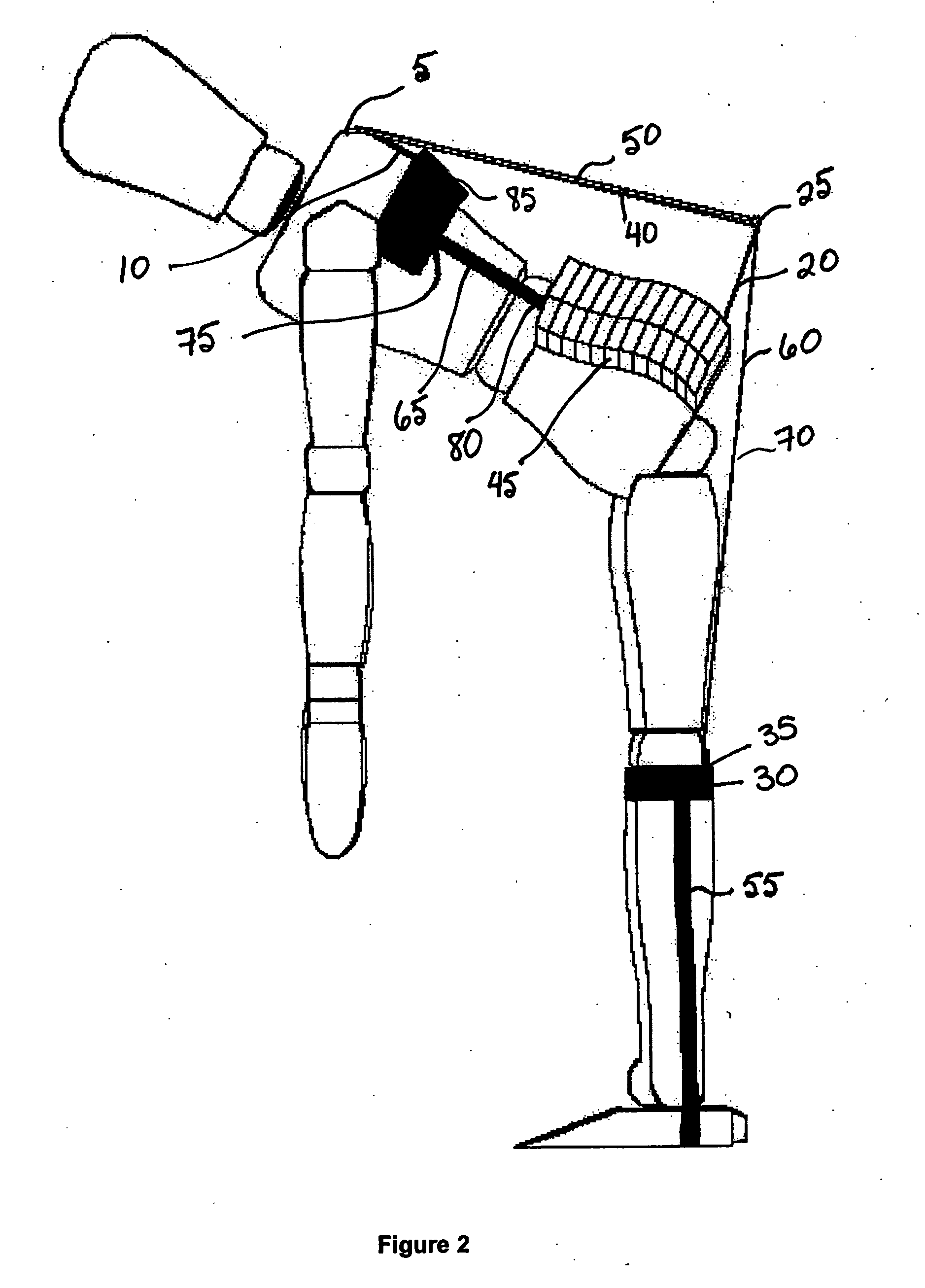Lift assist device and method
a technology of lifting assistance and lifting force, which is applied in the field of motion assistance devices, can solve the problems of increased risk of disc prolapse, low back pain, occupation and tasks, etc., and achieve the effects of reducing compressive and shear force, increasing the acceleration of the upper body, and increasing the compressive for
- Summary
- Abstract
- Description
- Claims
- Application Information
AI Technical Summary
Benefits of technology
Problems solved by technology
Method used
Image
Examples
example 1
Development of Static Equations for Lifts
[0071] A simple two-dimensional model was developed to predict how the erector spinae muscle activity is affected by the personal lift assist device of the preferred embodiment of the invention (shown in FIG. 1). This model can be explained arithmetically through a moment arm analysis of the forces generated during lifting without PLAD (as shown in FIG. 3) and with PLAD (as shown in FIG. 4). The development of static balance equations improves our understanding of forces that act about a point A in the spinal column, typically at the L4 / L5 disc or the L5 / S1 disc of the spinal column.
example 1a
Development of Static Equations for Lifts Without PLAD
[0072] If we assume the weight of a subject's upper body is “W ,” and the weight of the object to be lifted is “W2”, then the vertical force exerted to lift a load, “W”, can be found using equation 1.
W=W1+W2 (1)
[0073] The distance, “b”, between the center of gravity of “W” and the L4 / L5 disc of the spinal column is found by equation 2, wherein “b1” is the distance between the center of gravity of the subject's upper body and the L4 / L5 disc, and “b2” is the distance between the center of gravity of the object to be lifted and the L4 / L5 disc (see FIG. 3).
b=(b1W1+b2W2) / W (2)
[0074] The distance between the erector spinae and the lumbar vertebrae, or the “effective lever arm”, is denoted as “d”. An equilibrium equation can be obtained for the sum of the moments at a point A, denoted “MA” where the force exerted by the erector spinae muscle is denoted as “Fm”.
ΣMA=0=Fmd−Wb (3)
The force exerted on the erector spinae muscle,...
example 1b
Development of Static Equations for Lifts with PLAD
[0076] We may quantify the affects of wearing the PLAD embodiment of the invention pictured in FIG. 1 by adding it to the relevant equations. FIG. 4 depicts the parameters involved with a subject wearing such a device. The force exerted by the erector spinae muscle, “Fm”, in this condition can be calculated with equation 10 where the force exerted by the device is represented as “FPLAD” and the distance between the anchor of the lower back and the L4 / L5 disc, or moment arm of the device, is denoted as “a”.
Fmd+FPLADa−Wb=ΣMA=0 (9)
Fm=(Wb−FPLADa) / d (10)
[0077] Comparing equations 4 and 10 shows that the amount of force exerted by the erector spinae when a subject is wearing PLAD and bending from the waist to lift an object from the floor, is an amount [FPLADa / d] less than the same situation without PLAD, where the distance between the erector spinae and lumbar vertebrae, “d”, is constant.
[0078] The compressive force acting on th...
PUM
 Login to View More
Login to View More Abstract
Description
Claims
Application Information
 Login to View More
Login to View More - R&D
- Intellectual Property
- Life Sciences
- Materials
- Tech Scout
- Unparalleled Data Quality
- Higher Quality Content
- 60% Fewer Hallucinations
Browse by: Latest US Patents, China's latest patents, Technical Efficacy Thesaurus, Application Domain, Technology Topic, Popular Technical Reports.
© 2025 PatSnap. All rights reserved.Legal|Privacy policy|Modern Slavery Act Transparency Statement|Sitemap|About US| Contact US: help@patsnap.com



